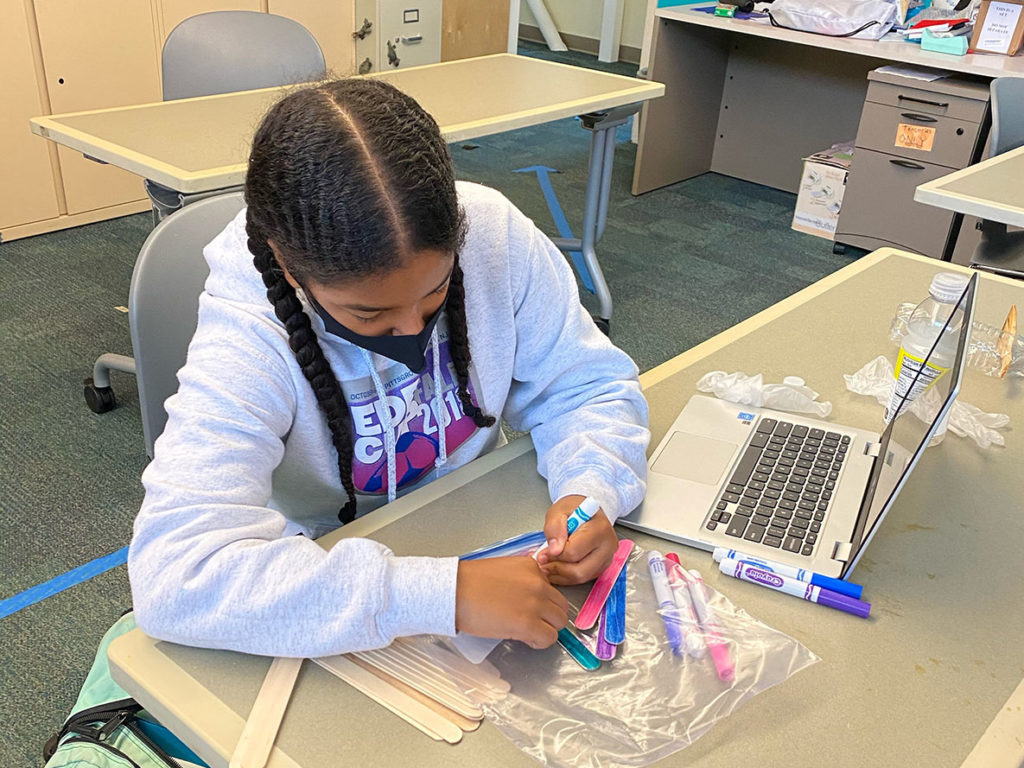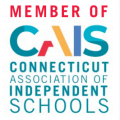Hear how middle school has changed and why it’s important.
On Character Development
The middle school years are key for development of morals, values, and character. Middle School Head Jenny Esposito reminds us, “When we allow students to collect, evaluate, think and decide on their own —generate work on their own, versus teacher-produced tests or lectures — kids have opportunities to practice factoring in their own feelings and opinions. They are invited to develop their own sense of self and sense of justice. At Watkinson, we don’t hide those thorny issues from kids. We create so many access points to complex, dense topics; this allows them to engage at the level for which they are ready. Simultaneously, they develop their writing, thinking, and research skills.”
Learning Skills Program Director Downey Knapp, a veteran educator, shared, “Today’s middle school classroom is much more interactive, involving more critical thinking, analysis, and discussion. There are more projects and collaborating, small group work, and presentations. Now teachers are not front and center, but rather circulating, observing, advising and encouraging all kinds of learners to participate. Students are taught how to dig deep, problem solve, and use their creativity. Today’s teaching is much more stimulating!”
Esposito concurs, “This way of being, teaching, coaching in the middle school gives students ways to access curriculum and find materials that speak to them and continue their growth: skills, character and community.”
On the Topic of Technology
In the last 10 years, social media, mobile technology, and access to both for middle schoolers has escalated.
Esposito has observed, “Students are getting devices at younger and younger ages and the devices can do more and more. The implications of that for our youngest students is that social interaction can be omnipresent. There is a relentless flow of information and communication and some kids have difficulty putting that down.”
Watkinson’s responsibility is to have reasonable and effective policies for technology usage.
It is our role to help educate families and students to problem solve, understand, and collaborate with the ever-changing slate of tech tools. Esposito adds, “It is a field that is rapidly changing; as a teacher, it’s both demanding and fun!”
Another change for Watkinson is that we are now a 1:1 Chromebook school. Esposito points out, “The need to have a device to do much of your academic work is a change. Different kids react differently to this. A lot of the tech is fantastic! We are learning how to teach differently by having it. This is a huge shift. It takes a thoughtful, reflective, communicative school to learn alongside our students and families, keeping everyone open to change.”
Despite being in the midst of a global pandemic, we continually seek guidance and best practices. Recently, Dr. Amy Alamar (an expert educator, author, and consultant who provides guidance about tech and tech usage to parents, educators, and students) spoke with both our middle school faculty and subsequently our middle school parents about how young people think and feel about navigating digital spaces. This kind of professional development is what has helped (and will continue to help) us evolve our approach.
Over his 25-year tenure, Watkinson’s Director of Technology Nathan Herzog has seen a seismic shift. “Middle schoolers can do a 15-person video chat from their mobile device; 15 years ago, that was big tech for businesses. Not only do they have access to extraordinary tools, but also those tools can open practically every movie, song, and book in the world. Quite literally, everything is at their fingertips 24/7.”
The implications of that, according to Esposito, “Now that kids have so much tech and information access, we are looking more at not only how we prepare students for high school, but also looking at what is special about the middle school years: where are they developmentally, how will they best thrive in middle school. It’s not enough to just have them on a conveyor belt leading to high school. At Watkinson, we work to help them thrive now.”
Esposito reflects, “Philosophically, Watkinson’s middle and upper schools are not that different; there is a natural progression from one to the other. Our middle school faculty get the double delight of knowing that we are both preparing our students for high school, while also helping them be their most authentic selves now.”
Come see for yourself; attend an info session or book a tour.



